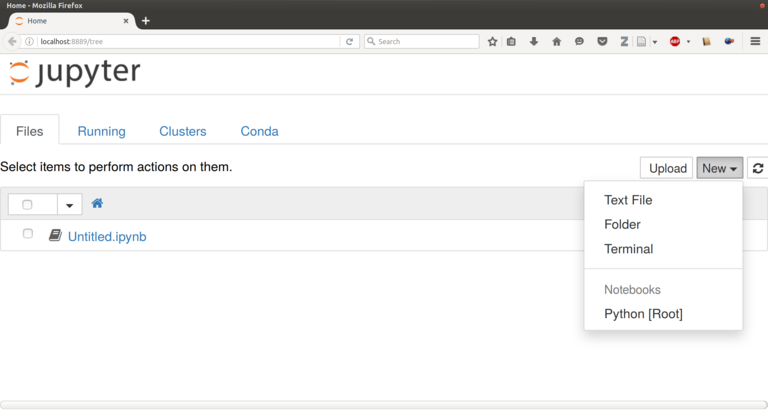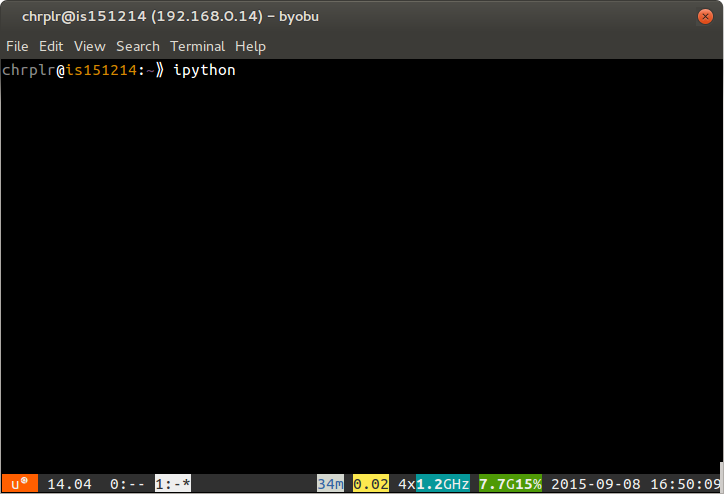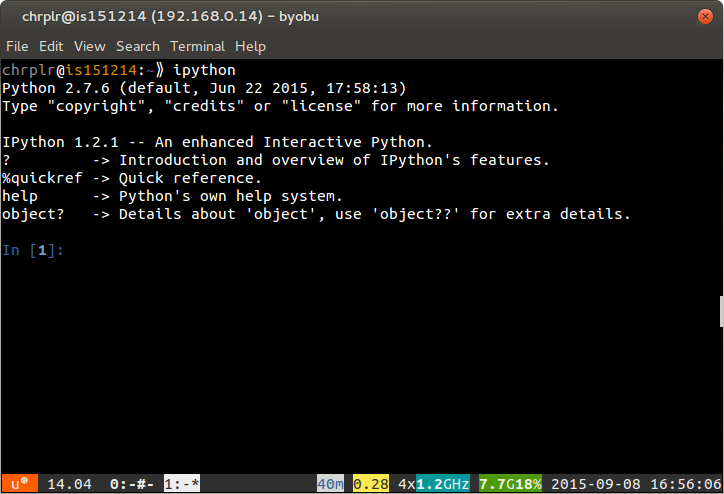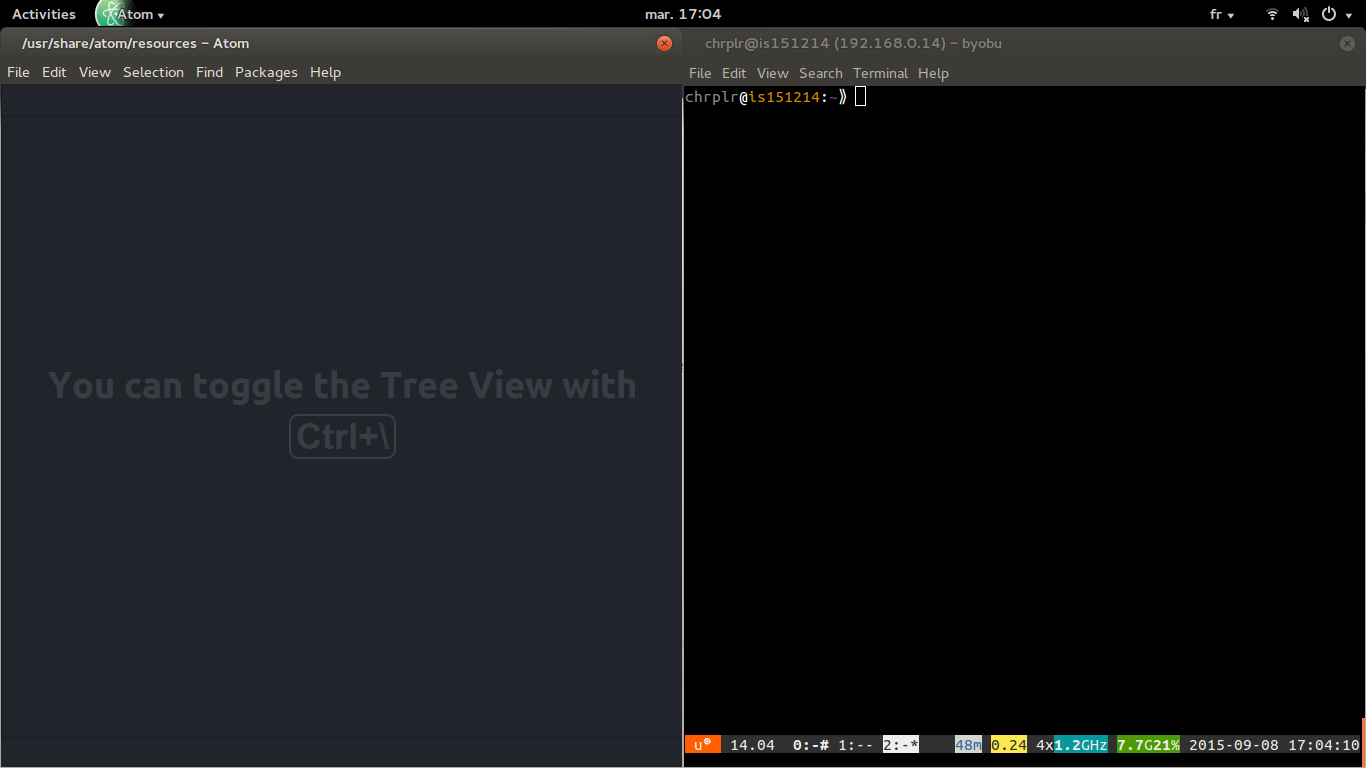
You can program in Python in (at least) three different ways: interactively with jupyter notebook or with an ipython command line, or using an edit-run cycle approach with a program editor (e.g. atom, idle, spyder,…).
In all cases, you need to be able to open a command line window (a.k.a. a terminal): * Ubuntu-Linux: Ctrl-Alt-T (see https://help.ubuntu.com/community/UsingTheTerminal) * MacOSX: Open Finder/Applications/Utilities/Terminal (see http://www.wikihow.com/Get-to-the-Command-Line-on-a-Mac) * Windows: Win+X+Command-Prompt (see http://pcsupport.about.com/od/commandlinereference/f/open-command-prompt.htm)
The first step is to type jupyter notebook in a terminal
mkdir -p AIP2016-files # only if AIP2016-file does not yet exist
cd AIP2016-myfiles
jupyter notebookA browser will open a page like the following:

By cliking on New and selecting Python [root], a new tab will show a page like below, where you can enter python code in ‘cells’. To execute the code in a cell, just move the cursor there and press Ctrl+Enter

A nice feature of the “n jupyter notebooks” is that they are saved automatically, in .ipynb files that can be shared with other people. This is very handy, for example, to send a data analysis report by email.
Jupyter’s documentation si available at http://jupyter.readthedocs.io/en/latest/index.html
You can launch ipython in a terminal, and start typing python commands that are interpreted and executed when you press ‘Enter’.
ipython on the command-line and press Enter: |
 |
import turtle
turtle.circle(50)
turtle;forward(100)
turtle.circle(50)
turtle.right(90)
turtle.forward(100)
turtle.right(90)
turtle.heading(). . .
This way of using Python is fine if you need to quickly test an idea. But as soon as you quit ipython (by pressing Ctrl-D), you lose all traces of what you have done. To avoid that, you want to use the **Edit-run* approach.
Using a text editor, e.g. atom, you write a python script, that is, a series of commands, that you save in a file; then you give this file to interpret to a python interpreter. Here is how:

New File in the Editor and enter the following text: import turtle
turtle.forward(50)
turtle.left(120)
turtle.forward(100)
turtle.left(120)
turtle.forward(100)
turtle.left(120)
turtle.forward(50)myscript.py in your personal (home) directorypython myscript.py on a command line of the Terminal. Try it now.Important: you must make sure that the current working direcoty of the terminal is the same directory where the file myscript.py has been saved. Otherwise, you will get an error message such as ‘No such file or directory’. To fix this problem, you must use the ‘cd’ command to navigate the directory structure.
Remarks: